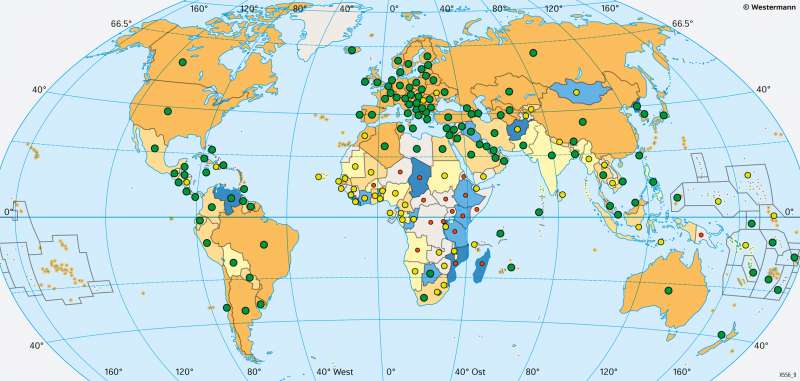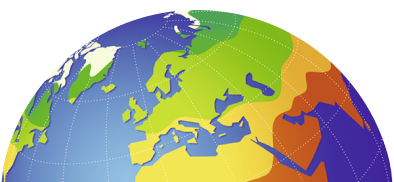The World - Nutrition and health
Level of development
978-3-14-100890-6 | Page 35 | Ill. 5

Overview
The fight against extreme poverty and hunger and the improvement of the drinking water supply was given top priority in the United Nations Millennium Development Goals. Nevertheless, the situation has worsened rather than improved in recent years. When the development goals were formulated in 2000, there were about 775 million undernourished people. By 2015, their number was supposed to fall to 420 million. In fact, 795 million people - mainly women and children - were affected by hunger in 2015. The development goal was clearly missed. There are also major differences in these indicators between the various regions of the world.
World regions and their level of development in nutrition and health
Sub-Saharan Africa has the most Least Developed Countries and is most affected by malnutrition. In some countries, the supply situation has even worsened in recent years. In addition, clean and safe water is hardly available anywhere. A relatively secure food situation in the south of the continent is only given in South Africa; in the northern half of the continent, the situation is generally better.
In Asia and Latin America, there are only a few countries with problems comparable to those in southern Africa. Some of these countries are affected by ongoing civil wars, such as Iraq, Syria, Yemen and Afghanistan. In these countries, the reduction in agricultural production and impaired trade have a negative impact on the supply situation. Warlike conflicts also hamper the import and distribution of food as well as effective emergency aid by NGOs and foreign aid workers. A pacification of the conflicts would be the prerequisite for an improvement of the food situation.
In other countries such as India and Pakistan, the proportion of poor people in the population is very high. They do not have sufficient income or access to land resources to buy or grow food. The key to improving the food situation here would be poverty reduction.
In many parts of the world, especially in developing countries, the food situation has been further aggravated for several years by rising global food prices and competition for land between food and agricultural commodities. Commercial land acquisition by large domestic and foreign investors ("land grabbing") plays an important role in this.
Access to clean drinking water
According to the definition of the EU Drinking Water Directive, drinking water is "water intended for human consumption", which must have certain legally specified quality characteristics. The most important requirements are fitness for human consumption and freedom from pathogens and other substances harmful to health. Only a small part of this scarce resource is actually used as drinking water - a person consumes at most two to three litres of water per day - a much larger quantity is used in households for the preparation of food and beverages, for laundry and cleaning, as well as in industry, commerce and agriculture. For the production of a glass of apple juice, for example, about 190 litres of water are needed, for a pair of jeans it is already 5,000 litres, for a car it can even be 450,000 litres.
The situation regarding water supply is most favourable in Europe (although regional problems are also emerging there), America (with a few exceptions), North and South-East Asia and Oceania. There is currently insufficient availability of water in almost all of Africa, West Asia, South Asia, and Central Asia. Parts of China, Mexico, Australia, and the USA are also affected. Yet, in purely mathematical terms, there are enough freshwater reserves on earth; even three times the current world population could be adequately supplied with this vital resource. According to a study by the UN Environment Programme, the average annual precipitation in Africa alone could cover the water needs of 9 billion people. As with food, the problem is primarily one of distribution. On the one hand, there are arid and semi-arid areas on earth where the lack of water is a consequence of climatic and geographical conditions. The problem is exacerbated by the strong population growth of recent years. In these regions, often more than 25 percent of the people have no access to clean drinking water. However, there are countries, for example on the Arabian Peninsula, which also have unfavourable natural conditions, but have options for action with regard to water shortages due to their wealth.
The extent to which the problem of insufficient water supply is one of poverty is demonstrated by the fact that, according to UN figures, more than 1.5 billion people currently live in regions of the world where water is available in sufficient quantities, but where the necessary infrastructure of pumping stations and pipe networks to make it available to the population is lacking. Africa is most severely affected by this problem - even in the ever-humid tropics with high rainfall all year round.




